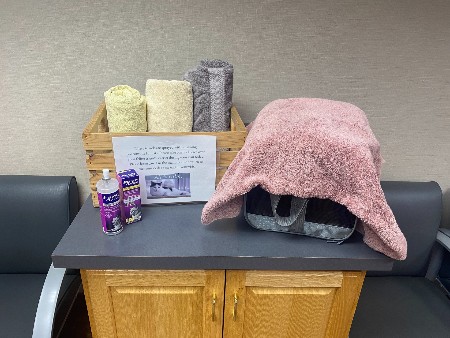
Cats in cars: How to make trips to the vet easier on everyone
Taking a cat for a car ride is, for some owners, a necessary evil. For cats the trip can be stressful to the point of traumatizing; it’s not exactly a picnic for the owner either. Unlike dogs, cats like familiarity and staying in the same territory. They’re also more likely to associate the sights and sounds of a car ride with an unpleasant past experience in a vehicle. According to Dr. Justine Rasche of Cascade Hospital for Animals and Breton Village Animal Clinic, “Cats feel stressed when their routine changes because they no longer feel safe and confident in their surroundings.”
But as difficult as it can be to do, it’s so important to bring your cats to the vet on a regular basis, even if they seem perfectly healthy. “The earlier we can detect an illness on examination or screening lab work, the better we can prevent significant illness or begin treatment to improve long-term outcomes,” says Dr. Rasche. Don’t give in to the temptation to just keep him home. Make your life and his easier by preparing ahead of time.
Creature comforts
It’s imperative to secure your cat in a suitable carrier before you leave the house. Cats loose in a moving vehicle are a recipe for disaster; stressed and frightened in an unfamiliar place, he’d almost certainly be a distraction for the driver and possibly even cause an accident. If your cat is new to carriers, or if you need to reacclimate him to them, spend some time a few days before your vet visit introducing him to the carrier and forming a positive association with it for him.
- Bring the carrier out and leave the door open so that he can explore it; put a favorite blanket and a toy inside to pique his curiosity and make it a more comforting place. “You can even consider keeping the carrier out in a quiet place for your cat to use as a place to eat and rest all of the time. This helps them associate the carrier with positive experiences,” says Dr. Rasche.
- Spray the interior with a pheromone spray such as Feliway (available for sale at the CHFA and BVAC offices). “This product works by mimicking a pheromone that cats produce from their facial glands when they are calm, so it communicates to your cat that they don’t need to be stressed or anxious,” says Dr. Rasche. “It is not going to work for every cat, but I do feel that many cats can get a positive response.”
- Practice walking out to the vehicle with the cat in his carrier and even go for a “test drive” around the block, rewarding your cat with a treat when you’re back inside if he reacts calmly. Consider allowing him to briefly explore the vehicle outside of his carrier while the vehicle is parked. Try to make the experience of being in a vehicle as positive as you can.
- If all else fails, give us a call. Your veterinarian may be able to prescribe a sedative to keep your cat calm for the ride. “Some cats are going to be stressed no matter how much you prepare and for those cases we have oral medication called Gabapentin that is frequently used,” says Dr. Rasche.
Appointment day Once you arrive at the vet, we provide Feliway-scented towels for your cat's comfort.
Once you arrive at the vet, we provide Feliway-scented towels for your cat's comfort.
When it is finally time to head to the vet, make the car ride as peaceful and low-stress as you can.
- Spray the interior of your vehicle with pheromone spray.
- Stress is contagious; the good news is, calm can be contagious too. Speak to your cat in a quiet, soothing voice before you leave and throughout the ride. “A cat’s hearing is four times more sensitive than yours, so even normal speaking volume can be perceived as threatening. I often find that my patients, especially when they are nervous, respond best to my soft and calm tone,” says Dr. Rasche.
- Secure the carrier safely to prevent it from sliding. Observe the speed limit and drive carefully, avoiding bumps—this one is always a good idea whether your cat is in the vehicle or not, but aim for an especially smooth ride when your cat is on board.
Once you arrive at the vet, we work with you to be sure the appointment is as low-stress as possible so that your cat doesn’t associate car rides with traumatic experiences. At CHFA, we have a cat-only entrance, and at both locations we have pheromone-sprayed towels available for use and a staff that fully understands cats’ sensitivities. Our main interest is your cat’s health!



